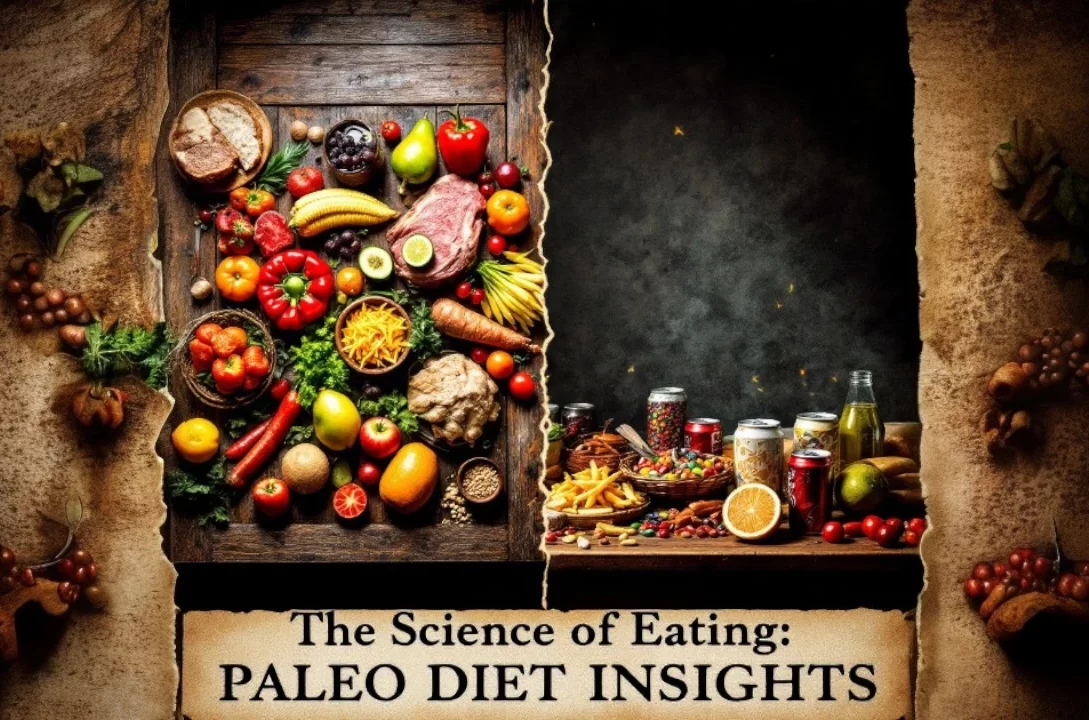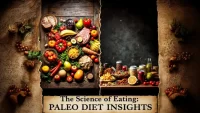The Paleo diet—often called the “caveman diet”—promises better health by mimicking how our ancestors ate. But does it live up to the hype?
Supporters claim it boosts energy, aids weight loss, and reduces inflammation. Critics argue it’s too restrictive and lacks long-term research.
In this science-backed breakdown, we’ll explore the real pros and cons of Paleo, helping you decide if it’s right for you.
What Is the Paleo Diet?
The Paleo diet focuses on whole, unprocessed foods that early humans might have eaten:
✅ Allowed:
- Meat, fish, eggs
- Vegetables, fruits
- Nuts, seeds
- Healthy fats (olive oil, avocado)
❌ Avoided:
- Grains (wheat, rice, oats)
- Dairy
- Legumes (beans, lentils)
- Processed foods & sugar
The idea? Modern processed foods contribute to obesity and disease, while Paleo promotes natural, nutrient-dense eating.
Pros of the Paleo Diet: What Research Shows
1. May Support Weight Loss
Studies suggest Paleo helps with fat loss and reducing waist circumference because:
- It’s high in protein and fiber, keeping you full longer.
- It cuts out refined sugars and processed carbs, reducing calorie intake.
A 2020 study found Paleo more effective for weight loss than standard diets.
2. Can Improve Blood Sugar Control
Research links Paleo to lower blood sugar and improved insulin sensitivity, making it beneficial for type 2 diabetes or prediabetes.
One trial showed greater improvements in HbA1c (blood sugar marker) compared to Mediterranean diets.
3. Reduces Inflammation
Paleo eliminates processed foods, refined sugars, and vegetable oils—all linked to inflammation.
Some studies note lower inflammatory markers (like CRP) in Paleo followers.
4. Encourages Whole, Nutrient-Dense Foods
By cutting processed junk, Paleo automatically increases intake of:
- Vitamins & minerals (from veggies, fruits, and meats)
- Healthy fats (omega-3s from fish, nuts)
- Antioxidants (from berries, leafy greens)
This can improve overall nutrient intake compared to standard Western diets.
5. May Improve Gut Health
Since Paleo avoids processed foods and artificial additives, it may support a healthier gut microbiome.
Some report less bloating and better digestion after switching.
Cons of the Paleo Diet: Potential Drawbacks
1. Restrictive & Hard to Maintain Long-Term
Eliminating entire food groups (grains, dairy, legumes) can be challenging socially and nutritionally.
Many people struggle with sustainability, leading to “cheat days” or quitting altogether.
2. Risk of Nutrient Deficiencies
Cutting dairy and grains may lead to low calcium, vitamin D, and fiber if not properly balanced.
Legumes (banned in Paleo) are rich in plant-based protein and fiber, which some miss out on.
3. Can Be Expensive
Grass-fed meats, wild-caught fish, and organic produce cost more than processed alternatives.
This makes Paleo less accessible for some budgets.
4. Lack of Long-Term Research
While short-term studies show benefits, we don’t have decades of data on Paleo’s effects.
Some experts worry about long-term heart health due to high saturated fat intake (from red meat).
5. Not Ideal for Athletes or High-Energy Needs
Endurance athletes often rely on carbohydrates for fuel, which Paleo limits.
Without grains or legumes, some struggle with energy levels during intense training.
Paleo vs. Other Popular Diets
| Diet | Key Focus | Similarities to Paleo | Differences |
|---|---|---|---|
| Keto | High-fat, very low-carb | Both cut grains & sugar | Keto allows dairy; Paleo doesn’t |
| Mediterranean | Whole foods, healthy fats | Emphasizes veggies, fish, nuts | Includes whole grains & dairy |
| Whole30 | Elimination diet | Similar to Paleo rules | Only 30 days; stricter |
Who Should (and Shouldn’t) Try Paleo?
Good For:
✔ Those wanting to lose weight without counting calories.
✔ People with insulin resistance or type 2 diabetes.
✔ Anyone looking to reduce processed foods.
Not Ideal For:
✖ Vegans/vegetarians (relies heavily on animal proteins).
✖ Athletes needing high-carb fueling.
✖ People with lactose intolerance who rely on legumes for protein.
How to Do Paleo the Right Way
If you try Paleo, maximize benefits and minimize risks by:
- Including a variety of veggies (not just meat).
- Choosing lean meats & fatty fish (not just bacon).
- Adding nuts & seeds for healthy fats.
- Considering supplements (like calcium or vitamin D if avoiding dairy).
FAQs
1. Can I eat potatoes on Paleo?
Sweet potatoes = yes (in moderation). White potatoes = debated (some strict Paleo followers avoid them).
2. Is Paleo good for heart health?
Mixed research—it cuts processed foods (good) but may include more red meat (controversial). Opt for lean meats and fish to balance.
3. Will Paleo help with autoimmune diseases?
Some report reduced inflammation, but more research is needed. The AIP (Autoimmune Protocol) diet, a stricter Paleo version, may help.
4. Can I drink alcohol on Paleo?
Technically no, but some allow dry wine or gluten-free spirits in moderation.
5. Is Paleo safe long-term?
Short-term studies show benefits, but long-term effects are unclear. Cycling Paleo with other diets may be a smarter approach.
Final Verdict: Is Paleo Worth Trying?
The Paleo diet has real benefits—weight loss, better blood sugar, reduced inflammation—but it’s not perfect. Its restrictive nature and lack of long-term data make it better as a short-term reset than a forever diet.
If you try it:
- Focus on variety (don’t just eat bacon and steak).
- Monitor energy levels (adjust if you feel fatigued).
- Consider a modified version (some reintroduce dairy or legumes).
Ultimately, the best diet is one you can stick to. Paleo works for some, but others thrive on less restrictive plans like Mediterranean.
Want more diet comparisons? Read our guide on Keto vs. Mediterranean or get personalized nutrition tips.
(Internal links: Best Anti-Inflammatory Foods, How to Improve Gut Health)
(External sources: Harvard Health on Paleo, NIH Study on Paleo and Diabetes)
This science-backed guide cuts through the hype, giving you the truth about Paleo—no fluff, just facts. Ready to give it a try—or rethink it? The choice is yours! 🥩🥦











